This article was medically reviewed by Victor Catania, MD. Dr. Catania is a board certified Family Medicine Physician in Pennsylvania. He received his MD from the Medical University of the Americas in 2012 and completed his residency in Family Medicine at the Robert Packer Hospital. He is a member of the American Board of Family Medicine.
There are 8 references cited in this article, which can be found at the bottom of the page.
wikiHow marks an article as reader-approved once it receives enough positive feedback. In this case, 91% of readers who voted found the article helpful, earning it our reader-approved status.
This article has been viewed 787,393 times.
If you've been diagnosed with high blood pressure (also called hypertension), you're probably looking for techniques to decrease your blood pressure (bp) and reduce your risk of heart disease and stroke. Fortunately, there are many ways to naturally lower bp. From tweaking your diet and exercise routine to reducing stress, we've got the best expert advice on how to control high blood pressure.
Steps
Eating on the DASH Diet
-
1Lower your sodium intake. Many people eat as much as 3,500 mg of sodium per day. The DASH diet, which is short for Dietary Approaches to Stop Hypertension, recommends no more than 2,300 mg of sodium per day. Sodium is in salt, so the best way to reduce your sodium intake is to eat less salt. You can do this by:[1]
- Not adding table salt to your food. This may also include reducing the amount of salt you use when cooking. Easy ways to do this include not salting meats and not adding salt to the water when you cook rice or pasta.
- Avoiding salty snacks and processed food such as chips, pretzels, and salted nuts. They often have large amounts of salt added to them. If you do purchase prepared foods, look to see if you can get a low-salt version. Check the contents of canned food, premixed seasonings, bouillon cubes, canned soups, jerkies, and sports drinks to see if they have salt added to them.
-
2Eat six to eight servings of grains per day. Whole grains are better than processed white rice or processed white flour because they have more fiber and nutrients. A serving is a slice of bread or a half a cup of cooked rice or pasta. You can eat more whole grains by:[2]
- Buying whole wheat flour and pasta instead of white. Many whole wheat bread products will say on the packaging that they are whole wheat.
- Oatmeal and brown rice are also excellent sources of nutrients and fiber.
Advertisement -
3Load up on fruits and vegetables. You should eat four to five servings of fruit and four to five servings of vegetables each day. A serving is a half a cup of leafy vegetables or a ½ cup of cooked vegetables. Fruits and vegetables are great sources of potassium and magnesium which help to lower your blood pressure. Excellent ways to get your fruits and vegetables include:[3]
- Eating salads with your meals. You can keep them interesting by varying what you put in them. You can add a sweet element by putting apple or orange slices on a salad. Leave on the peels of thin-skinned fruits like apples because they also contain nutrients. You can also go more traditional with fresh greens, carrots, and tomatoes. But go easy on the salad dressings: they often have a lot of salt and fatty oils.
- Making vegetables a side dish. Instead of cooking pasta, try putting the main dish over a sweet potato or next to a side of squash.
- Snacking on fruits and vegetables between meals. Take an apple, banana, carrot, cucumber or green pepper with you to work or school.
- Buying fresh and frozen vegetables. If you are worried about having fresh produce go bad before you eat it, frozen vegetables are an excellent choice. You can put them in the freezer until you need them and when you thaw them, they will still be packed with nutrients.
-
4Add low-fat dairy products. Dairy is an important source of calcium and vitamin D, but it is important to choose carefully to avoid eating too much fat and salt. A cup is a serving. Aim for two to three servings per day.[4]
- Cheese is often high in salt, so eat it sparingly.
- When you eat yogurt and drink milk, go for the low-fat or skim varieties. Both are great with whole-grain cereals for breakfast.
-
5Eat lean meat, poultry and fish in moderation. Meats and fish are excellent sources of protein, vitamins, iron and zinc, but some kinds can be high in fat and cholesterol. Since fat and cholesterol can clog your arteries, it is best not to eat too much. Eat no more than six servings per day. A serving is an ounce of meat or an egg.[5]
- Avoid fatty red meats, and if you do eat them, cut the fat off as much as possible. When you cook, don’t fry your meats. Healthier alternatives include baking, grilling, or roasting.
- Salmon, herring and tuna are great sources of omega-3 fatty acids. Eating these fish can help control your cholesterol, and they are high in protein.
-
6Control your fat consumption. Fat increases your risk of heart disease. To protect your heart, restrict your fat intake to a maximum of three servings per day. A tablespoon of butter is a serving. Easy ways to reduce your fat intake include:[6]
- Not spreading butter or mayonnaise on bread. Also, you can reduce the amount of oil you cook with. Substitute skim milk for whole milk and avoid heavy cream, lard, solid shortenings, palm and coconut oils.
-
7Supplement your diet with nuts, seeds, and legumes. They are relatively high in fat, but they also have magnesium, potassium, fiber, and protein. Because of this, the DASH diet recommends eating only four or five servings per week. A serving is 1/3 of a cup of nuts.
- Nuts and seeds make an excellent addition to salads or, when unsalted, a healthy snack.
- For vegetarians, tofu is an excellent meat substitute because it is high in protein.
-
8Restrict your sugar consumption. Processed sugars add calories to your diet without providing you with the nutrients that will make you feel satisfied. Reduce your consumption of sweets to, at most, five per week. A serving is a tablespoon of sugar or jelly.[7]
- You can use artificial sweeteners like Splenda, NutraSweet, and Equal, but use them sparingly.
Making Lifestyle Changes
-
1Exercise. Being physically active can lower your blood pressure by helping to control your weight and manage stress.[8]
- For the best results try to do 75–150 minutes of physical activity per week. You can choose what you like to do best. Great options include walking, running, dancing, biking, swimming, and playing sports such as basketball or soccer.
- Do strength training, such as weight lifting, twice a week to maintain bone density and build muscle.
-
2Reduce your alcohol intake. Alcohol abuse is bad for your heart. Also, alcoholic beverages are high in calories and make you more prone to obesity. You can lower your blood pressure by quitting drinking or drinking only in moderation.[9]
- Men over 65 and women should limit themselves to, at most, one drink per day.
- Men under 65 should have no more than two drinks per day.
- A 12 oz beer, 5 oz glass of wine, or 1.5 oz of hard liquor qualifies as a drink.
-
3Don’t smoke or chew tobacco. Using tobacco can harden your arteries and cause them to become narrower, which will increase your blood pressure. Secondhand smoke also causes these effects. There are many resources available to help you quit smoking:[10] [11]
- Talking to your doctor or seeing a counselor
- Joining support groups or calling hotlines
- Using medications or nicotine replacement therapy
-
4Evaluate your medications and don’t use street drugs. If you think your medications might be causing high blood pressure, consult your doctor. Your doctor may be able to help you find a medication that is more suitable for you. Don’t stop taking your medications without clearing it with your doctor first. The following substances and medications may increase blood pressure:[12]
- Cocaine, crystal methamphetamines, and amphetamines
- Some birth control pills
- Some decongestants and cold medications
- Over-the-counter nonsteroidal anti-inflammatory drugs (Ibuprofen and others)
-
5Reduce your stress. While stress is an unavoidable part of life, you can use relaxation techniques to help you deal with it better.
Seeing a Doctor
-
1Call emergency medical responders if you think you might be having a heart attack or stroke. Both are emergencies and every minute counts.
- Signs of a heart attack include pressure or pain the chest, pain in one or both arms, neck, back, jaw, or abdomen, shortness of breath, sweating, nausea, or dizziness. In some, sudden onset reflux symptoms or pain just below the sternum may be experienced. Both men and women are vulnerable to heart attacks.[13]
- Symptoms of a stroke include: drooping face, difficulty speaking or understanding speech, numbness or weakness in an arm, leg, or the face, confusion, vision problems in one or both eyes, dizziness, loss of coordination, headache,
-
2Go to the emergency room if you have symptoms of high blood pressure. Most people do not have symptoms, so the best way to find out is to get your blood pressure checked every year at your annual checkup. That being said, when people show symptoms, they may include:[14]
- Headaches that don’t go away
- Blurred vision or seeing double
- Frequent nosebleeds
- Shortness of breath
-
3Take medications if your doctor feels it is needed. It is imperative to take the medications following your doctor’s instructions. If you skip doses or don’t take them correctly, they may not be effective. Your doctor may prescribe:[15]
- ACE inhibitors. ACE stands for Angiotensin-converting enzyme. This medication relaxes your blood vessels. It may give you a cough as a side effect. It can interact with other medications, including over-the-counter medications. Don’t take any other medications, including over-the-counter medications, supplements, and herbal remedies without consulting your doctor first.
- Calcium channel blockers. This medication widens your arteries. Ask your doctor about side effects and interactions.
- Diuretics. These medications reduce your salt levels by causing you to urinate.
- Beta-blockers. These medications slow your heartbeat and make it less forceful. This is generally a last resort for when other medications and lifestyle changes have not been sufficient.
Foods and Exercises to Lower Blood Pressure
Expert Q&A
-
QuestionI only have a high blood pressure when I see the doctor; do I need to make all these changes?
 Janice Litza, MDDr. Litza is a board certified Family Medicine Physician in Wisconsin. She is a practicing Physician and taught as a Clinical Professor for 13 years, after receiving her MD from the University of Wisconsin-Madison School of Medicine and Public Health in 1998.
Janice Litza, MDDr. Litza is a board certified Family Medicine Physician in Wisconsin. She is a practicing Physician and taught as a Clinical Professor for 13 years, after receiving her MD from the University of Wisconsin-Madison School of Medicine and Public Health in 1998.
Board Certified Family Medicine Physician We call that “White Coat” hypertension, and are realizing that your blood pressure is likely also going high in other stressful situations, and making healthy changes is important. Sometimes, if it gets very high, even for a short amount of time, it’s best to start daily medication to avoid long-term complications.
We call that “White Coat” hypertension, and are realizing that your blood pressure is likely also going high in other stressful situations, and making healthy changes is important. Sometimes, if it gets very high, even for a short amount of time, it’s best to start daily medication to avoid long-term complications. -
QuestionHow can I tell my blood pressure?
 Chris M. Matsko, MDDr. Chris M. Matsko is a retired physician based in Pittsburgh, Pennsylvania. With over 25 years of medical research experience, Dr. Matsko was awarded the Pittsburgh Cornell University Leadership Award for Excellence. He holds a BS in Nutritional Science from Cornell University and an MD from the Temple University School of Medicine in 2007. Dr. Matsko earned a Research Writing Certification from the American Medical Writers Association (AMWA) in 2016 and a Medical Writing & Editing Certification from the University of Chicago in 2017.
Chris M. Matsko, MDDr. Chris M. Matsko is a retired physician based in Pittsburgh, Pennsylvania. With over 25 years of medical research experience, Dr. Matsko was awarded the Pittsburgh Cornell University Leadership Award for Excellence. He holds a BS in Nutritional Science from Cornell University and an MD from the Temple University School of Medicine in 2007. Dr. Matsko earned a Research Writing Certification from the American Medical Writers Association (AMWA) in 2016 and a Medical Writing & Editing Certification from the University of Chicago in 2017.
Family Medicine Physician The only way to tell your blood pressure is to have it measured with a sphygmomanometer. If you are having a hypertensive emergency you may have dizziness and CNS symptoms
The only way to tell your blood pressure is to have it measured with a sphygmomanometer. If you are having a hypertensive emergency you may have dizziness and CNS symptoms
References
- ↑ http://www.mayoclinic.org/healthy-lifestyle/nutrition-and-healthy-eating/in-depth/dash-diet/art-20048456
- ↑ http://www.mayoclinic.org/healthy-lifestyle/nutrition-and-healthy-eating/in-depth/dash-diet/art-20048456
- ↑ http://www.mayoclinic.org/healthy-lifestyle/nutrition-and-healthy-eating/in-depth/dash-diet/art-20048456
- ↑ http://www.mayoclinic.org/healthy-lifestyle/nutrition-and-healthy-eating/in-depth/dash-diet/art-20048456
- ↑ http://www.mayoclinic.org/healthy-lifestyle/nutrition-and-healthy-eating/in-depth/dash-diet/art-20048456
- ↑ http://www.mayoclinic.org/healthy-lifestyle/nutrition-and-healthy-eating/in-depth/dash-diet/art-20048456
- ↑ http://www.mayoclinic.org/healthy-lifestyle/nutrition-and-healthy-eating/in-depth/dash-diet/art-20048456
- ↑ http://www.mayoclinic.org/diseases-conditions/high-blood-pressure/basics/lifestyle-home-remedies/con-20019580
- ↑ http://www.mayoclinic.org/diseases-conditions/high-blood-pressure/basics/risk-factors/con-20019580
- ↑ http://www.mayoclinic.org/diseases-conditions/high-blood-pressure/basics/lifestyle-home-remedies/con-20019580
- ↑ http://www.mayoclinic.org/healthy-lifestyle/quit-smoking/basics/quitsmoking-action-plan/hlv-20049487
- ↑ http://www.mayoclinic.org/diseases-conditions/high-blood-pressure/basics/causes/con-20019580
- ↑ http://www.heart.org/HEARTORG/Conditions/HeartAttack/WarningSignsofaHeartAttack/Heart-Attack-Symptoms-in-Women_UCM_436448_Article.jsp
- ↑ http://www.nhs.uk/Conditions/Blood-pressure-%28high%29/Pages/Symptoms.aspx
- ↑ http://www.nhs.uk/Conditions/Blood-pressure-%28high%29/Pages/Treatment.aspx
About This Article
To lower your blood pressure, follow the DASH diet, which is short for Dietary Approaches to Stop Hypertension. Reduce your sodium intake to no more than 2,300 mg each day, since high sodium levels increase your blood pressure, and limit your fat intake to no more than 3 servings each day. In addition, you should eat a diet rich in whole grains, fruits and vegetables, low-fat dairy products, and lean proteins in moderation. These diet changes, along with 75-150 minutes of exercise each week, should help lower your blood pressure. Read on to learn tips from our medical reviewer about the connection between stress and your blood pressure!
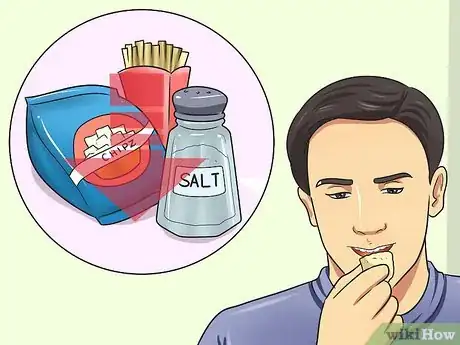

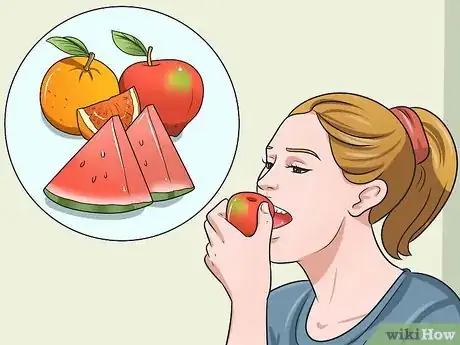


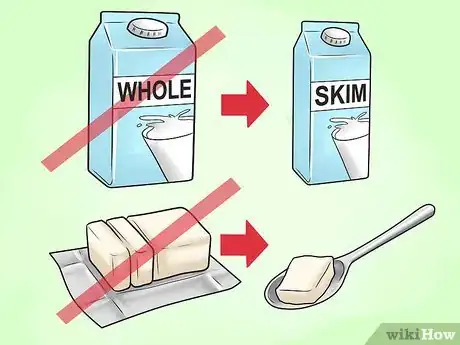
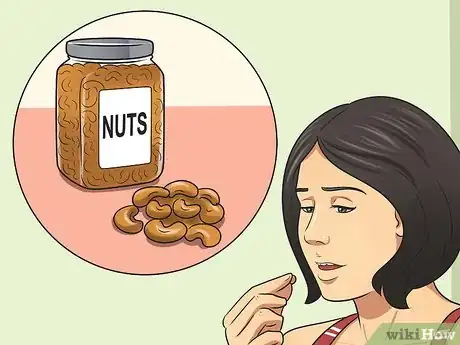
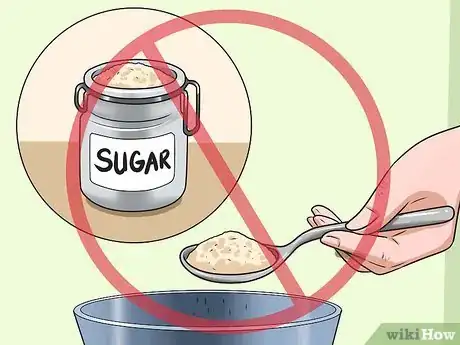

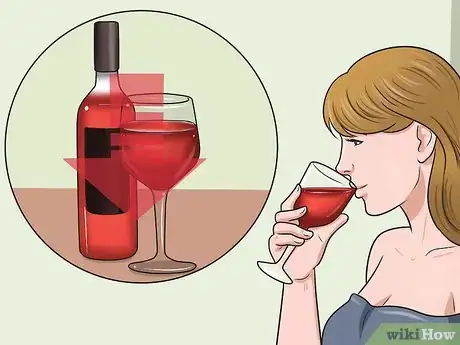
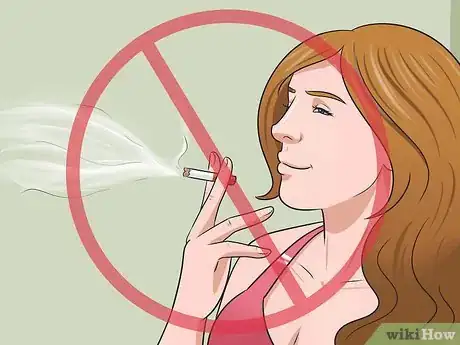
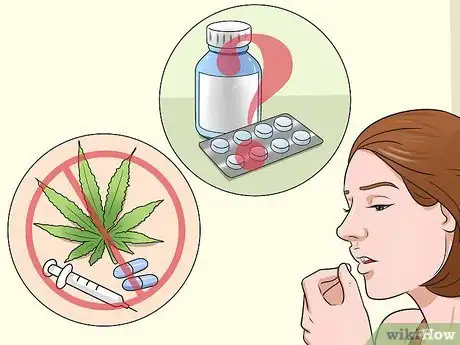
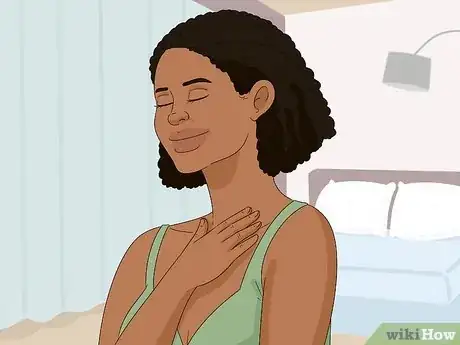
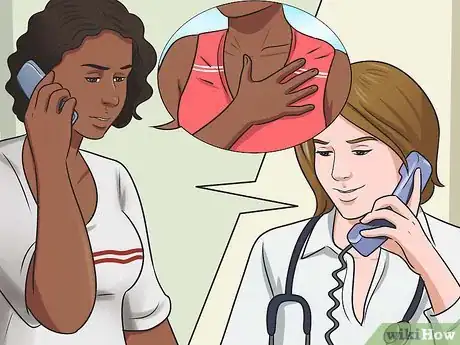


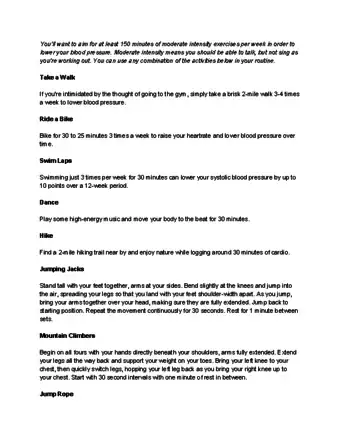
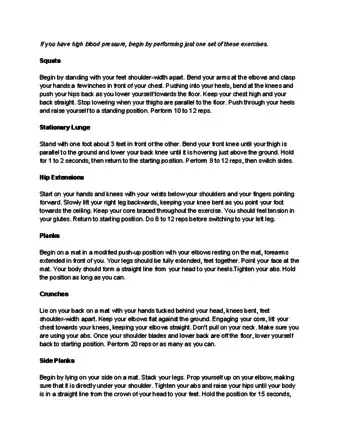
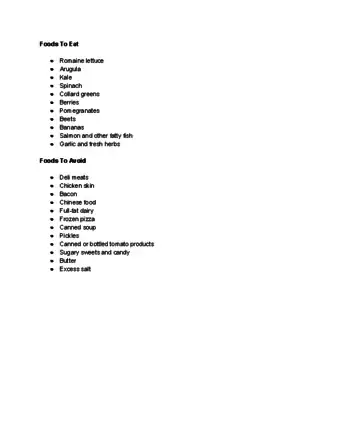

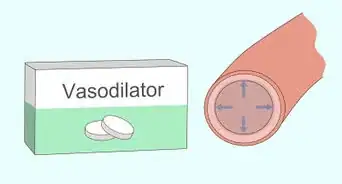


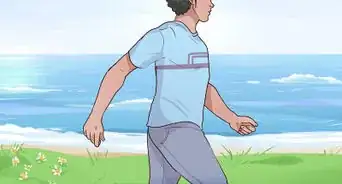


-Step-23.webp)








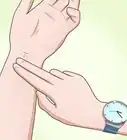
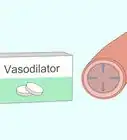

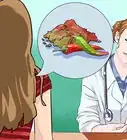




































Medical Disclaimer
The content of this article is not intended to be a substitute for professional medical advice, examination, diagnosis, or treatment. You should always contact your doctor or other qualified healthcare professional before starting, changing, or stopping any kind of health treatment.
Read More...